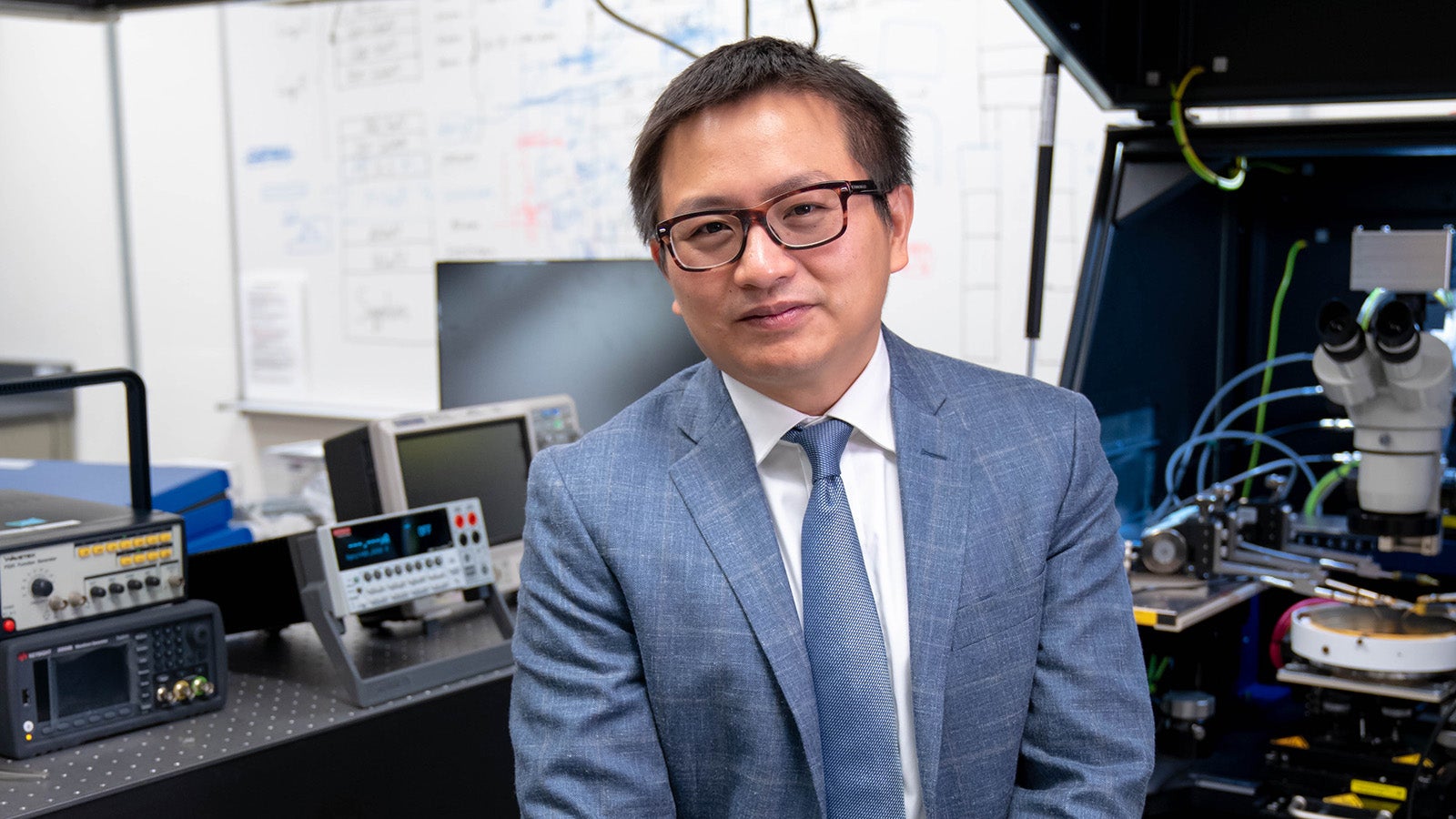Rice University is one of 14 university partners named to the $32.7 million, Penn State-led Center for Heterogeneous Integration of Micro Electronic Systems (CHIMES), aimed at developing heterogenous integration to advance efficient integration of semiconductor devices, microelectronics chips and other components.
The project was created by the Semiconductor Research Corporation (SRC)’s Joint University Microelectronics Program 2.0 (JUMP 2.0), a consortium of semiconductor industrial partners, including Intel and IBM, in cooperation with the Defense Advanced Research Projects Agency (DARPA).
“At Rice, we will lead the effort to demonstrate a novel power delivery network chip which integrates GaN power devices, voltage regulators and power circuits,” said the faculty lead at Rice, Yuji Zhao, associate professor of electrical and computer engineering (ECE).
Rice’s share of the funding is $1,492,063, with the university contributing an additional $528,776.
“We plan to deliver 1 kW power to a multi-tier logic/memory/interconnect chip with high density current of over 2 A/mm and over 80 percent efficiency, exceeding the present state-of-the-art. We will also develop novel heat spreaders and thermal via structures using diamond and BN nanomaterials, to achieve efficient thermal dissipation of the chips,” Zhao said.
CHIMES is one of seven centers funded through the JUMP 2.0 initiative for improving the performance and efficiency of electronic systems for emerging commercial and defense applications. The global semiconductor industry is expected to become a trillion-dollar industry by 2030, largely driven by computing, data storage, wireless and automotive applications.
The goal of the overall program is very ambitious,” Zhao said. “We will collaborate to advance microelectronics chip technologies to overcome barriers by minimizing the space between transistors and circuits, developing cooling solutions, improving energy efficiencies and more.
Ashutosh Sabharwal, the Ernest Dell Butcher Professor and chair of ECE, noted that semiconductor and integrated circuits technology has significantly advanced in recent years:
“With the new SRC center, we will have the ability to electrically interconnect many transistors and integrated circuit components, blurring the line between what is on-chip and off-chip. It is exciting to see that foundational electrical and computer engineering is continuing to push the knowledge frontier.”
JUMP 2.0 aligns with the school’s vision of “Engineering with Social Responsibility,” said Luay Nakhleh, the William and Stephanie Sick Dean of George R. Brown School of Engineering:
“Research and education that emphasize both benefits to humanity and impact on society and the environment are part of our mission. The JUMP 2.0 research that Zhao leads sets a powerful example. It provides a unique setting for the education and training of our students, with direct engagements with industrial partners.”
Rice is committed to becoming a national force in microelectronics and advanced materials, added Ramamoorthy Ramesh, professor of materials science and nanoengineering, and Rice vice president for research.
“We are excited that our faculty is part of the JUMP 2.0 Initiative. As a former participant in the JUMP Centers, I can vouch for the highest quality of their programs. Such large-scale DARPA programs will help strengthen Rice’s rapidly rising research portfolio in the microelectronics and advanced materials area,” Ramesh said. “Rice has strong expertise and facilities in the schools of engineering and natural sciences, and in the Advanced Materials Institute. We plan to enhance them further.”
Zhao earned his Ph.D. in ECE from the University of California Santa Barbara in 2012. Before joining the Rice faculty in 2021 he taught electrical engineering for seven years at Arizona State University. He heads the Wide bandgap Innovative Device Engineering (WIDE) Lab at Rice.

